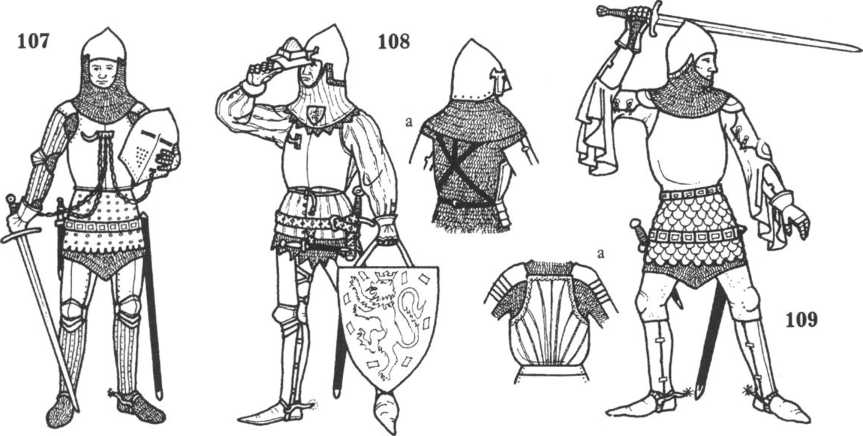Walther von Hohenklingen was killed at the Battle of Sempach, for which see page 68 of volume 1. Like Dieter von Hohenberg he wears a breastplate, but this time it is unattached to any sort of plate fauld, being worn over a baggy-sleeved, quilted jupon (a juppe de wambeson) under which quite probably there is a coat-of-plates too, as well as the mail haubergeon. The breastplate is not accompanied by a backplate, but is held by 2 diagonal straps crossing over the back of the body as depicted in 108a here (from a late-14th century ms. illustration of the Battle of Sempach) and 6a in volume 1, which comes from a Bohemian ms. of c.1380. Such breastplates, independent of the coat-of-plates, are mentioned in written sources from c.1340 but do not seem to appear in pictorial sources until the 1370s. In both Germany and Italy they often had in addition a short apron of several horizontal plates to protect the stomach, as in 108a. In addition to the quilted jupon, which is buttoned down the front and along the outer edge of the forearms, he also wears a quilted hood over his mail aventail, the dagged edge of which can be seen protruding from beneath it. This has a small inescutcheon of his arms sewn on the front and is laced to the Hundsgugel bascinet along with the mail aventail.

Other points to note are the appearance of the lance-rest {Rusthaken) on the breastplate, of which figure 107 is one of the earliest known representations, and the reappearance of full plate leg-harness. His feet, however, remain unarmoured, as seems to frequently be the case in German effigies.




 World History
World History









